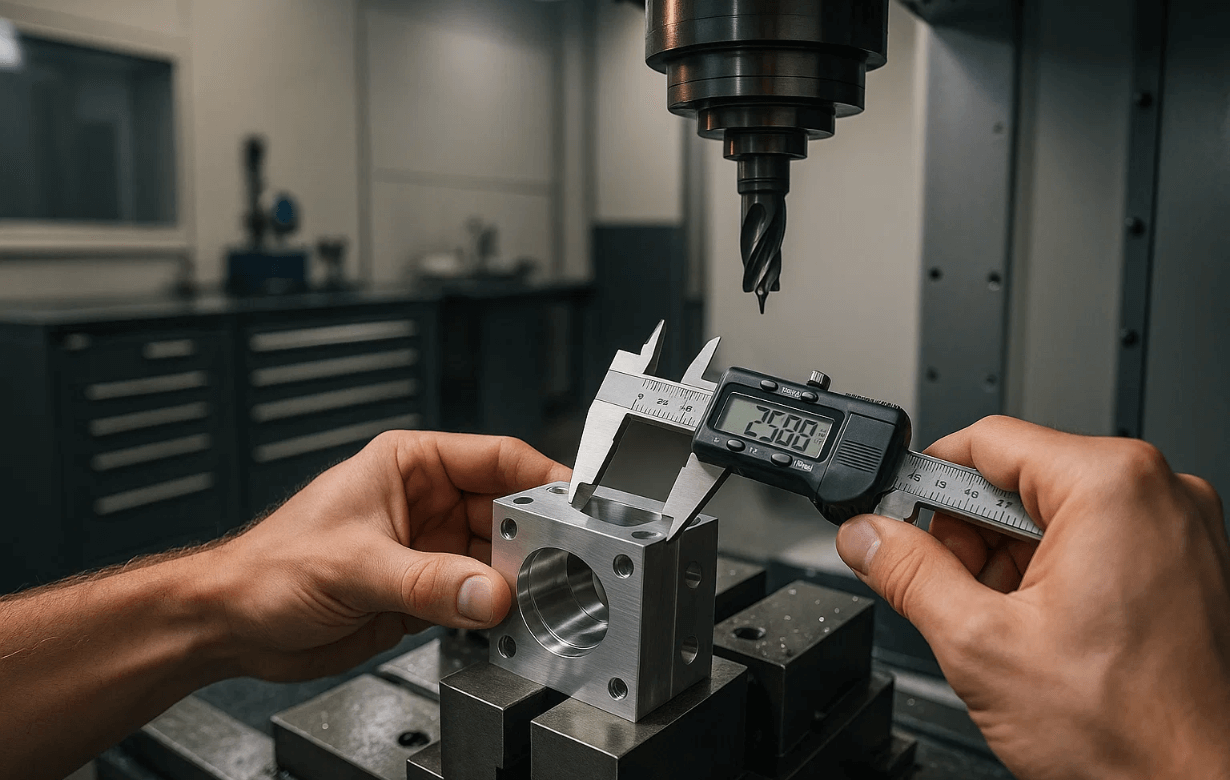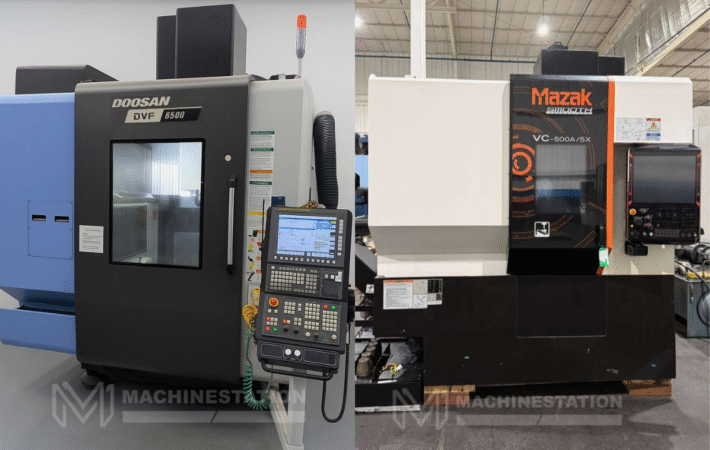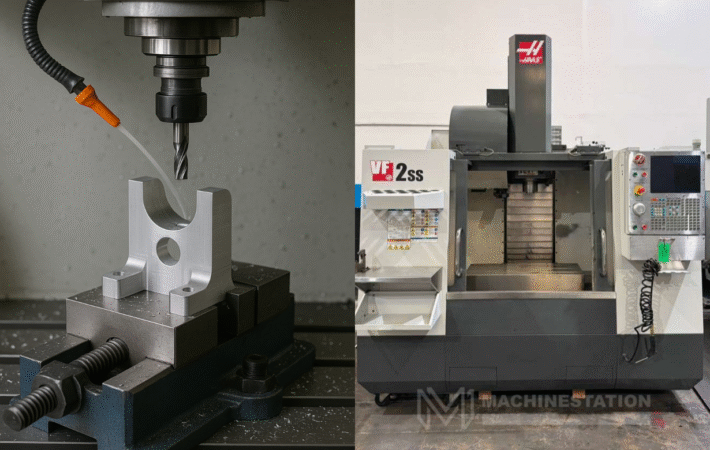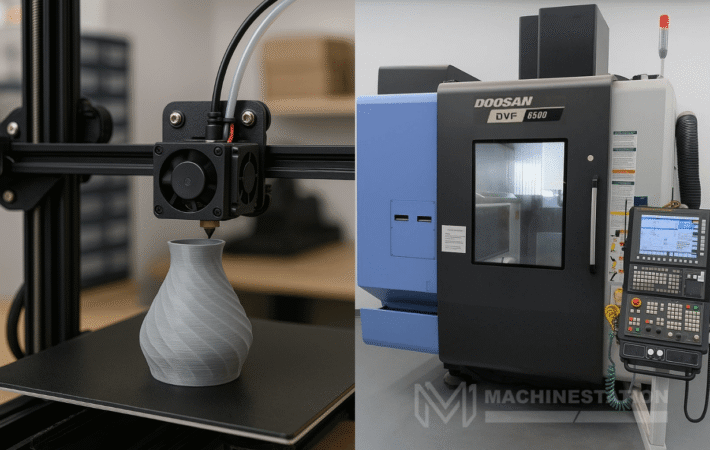Machining is a tough job that needs to be done by maintaining accuracy and precision and for that you will have to keep in mind different metrics, and follow them religiously. There can be different metrics that one needs to follow during machining depending on the material they are working on, or depending upon the type of machining they are doing. But one factor they need to be aware of irrespective of both circumstances is machining tolerance. One needs to achieve the right machining tolerance to have the perfect product created through the machining process.
But if you are worried about what machining tolerance is and how you can achieve it, then no need to worry anymore because you have landed on the best page that will help you to get a deep clarity about machine tolerance.
What is Machining Tolerance?
Machining tolerance is the allowable amount of variation in the dimensions of a part or component that is being manufactured. This is mainly used to define how much variation from the intended design to the actual size is acceptable and help it function properly without assembly. You can consider it to be the difference between the maximum and minimum limit of the dimensions like the length, width, and diameter.
For example, if you are trying to machine a part with specific dimensions like 10mm of diameter, the actual measurement might vary from that due to several factors like wear and tear on cutting tools, vibration, and human error. So the tolerance specifies within what range can that dimension vary. So if the tolerance in this case is ±0.1mm then the dimension of the diameter of the product must be between 9.9mm to 10.1mm.
Types of tolerances in machining:
Here are different types of tolerances that are applicable to CNC machining:
- Limit tolerances: It is defined by the specific upper and lower limits of variation in dimension during machining.
- Unilateral tolerances: This means that variations in only one dimension are allowed either positive or negative depending on the customer’s need.
- Geometric tolerances: This includes shapes and location controls like straightness, flatness, perpendicularity, true position, run out, and concentricity.
- Surface finish tolerance: It is about having an optimal surface roughness and it is calculated using metrics like Ra, Rz, etc.
Typical tolerance ranges in CNC machining:
Now here are some general ranges of tolerances in different CNC machining styles:
- General machining: ±0.05 mm to ±0.1 m
- Standard CNC (lathe, 3/5‑axis milling): ~±0.005″ (about ±0.13 mm)
- Tight tolerance CNC: down to ±0.001″ (±0.025 mm)—premium settings.
- Ultra‑precision machining (e.g., EDM, superfinishing): ±0.0001″ (±0.0025 mm) or tighter.
Why is machining tolerance important?
We have listed how precise tolerances are sometimes used in different machining processes in the list above, but why is it even important? Let’s dive deeper into it:
- Assembly: Proper tolerances ensure the right dimensions of parts that ensure parts fit together seamlessly, which reduces the risk of assembling failures and damages.
- Performance: Tight tolerances also help in improving the performances of the machines, which is very important for high stress applications like aerospace, medical devices, defense, and automobiles.
- Interchangeability: This factor is very important for high volume production environments, as it facilitates easy replacement and assembly. This also helps with spare parts availability.
- Cost management: Having variation is important because tight tolerances in product manufacturing are also very costly. Manufacturing parts with high tolerances need machines with advanced systems which will shoot up the whole manufacturing costs.
How is machining tolerance achieved?
Now, let’s jump into finding the answer to the main question – how is machining tolerance achieved? In reality, it can be achieved by following different methods. Here’s a list of the major ways to achieve machining tolerance:
- Selecting advanced CNC machines: High tech advanced CNC machines come with high tolerance features, they can bring micrometer accuracy in any kind of machining. They also come with features like real time compensations, and sensors. Advanced control languages like STEP-NC embed the tolerance data to guide precise operations. Also, multiple axis machines help in reducing errors.
- Rigidity and tooling: Rigid CNC machines are extremely important for achieving high machining tolerances as a machine that vibrates a lot during machining struggles to hold high tolerances during machining. For this reason, you will have to select CNC machines with rigid frames and minimal thermal expansion.
Other than the rigidity of the CNC machine, the tooling is also very important for achieving high tolerance during CNC machining. Sharp tools with the right coating will be able to do more precise machining than the tools that have wear and tear on them. - Tool holding and work holding: The Spindle does the job of the tool holding for CNC machines. The runout of the spindle directly impacts the cut being done by the CNC machine. The best quality spindles have the least runout which is often less than a few microns.
Secure work holding is also very important for achieving machining tolerance. The workpiece must be held rigidly in one place, it should avoid any kind of vibration, and that will ensure better tolerance. Clamps, chucks, vices, and custom fixtures must be designed in a way that it can withstand cutting forces, and prevent deformation of the parts being manufactured. - Environmental control: The rigorous machining process generates a lot of heat, which can cause the parts to expand. Parts can both contract or expand as per temperature changes. A controlled shop floor temperature will help minimize the dimensional shifts during high precision work. Also, using oil and water based coolants is very important to maintain an optimal temperature during the machining process.
Other than temperature control, cleanliness is also an important factor that helps in determining the tolerance level a CNC machine can achieve. Chips, dust, and coolant residues can interfere with machine components leading to wear, so cleaning the machining environment is severely essential. - Machining skill and programming expertise: Lastly, the skill of the operator and their expertise in G-code programming is also an important factor that helps in achieving proper machining tolerance. The skill of setting the right feed rates, and speed, and understanding any potential damage beforehand are some invaluable skills for an operator. Also, crafting programs efficiently for better toolpath generation is important for achieving the right machining tolerance level.
Conclusion:
In conclusion, achieving machining tolerance is a tough thing and it can be achieved by following all the methods we said while having the right operator to do all these. The better the tolerance achievement, the better the will, which will finally boost your own business. Moreover, having a strong and rigid CNC machine can benefit the most for machining tolerance so if you are looking for strong CNC machines, then you must check our Used Mighty Viper CNC Machines section.






